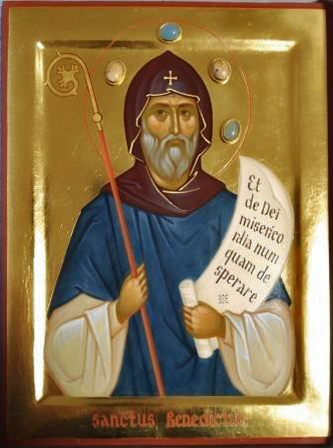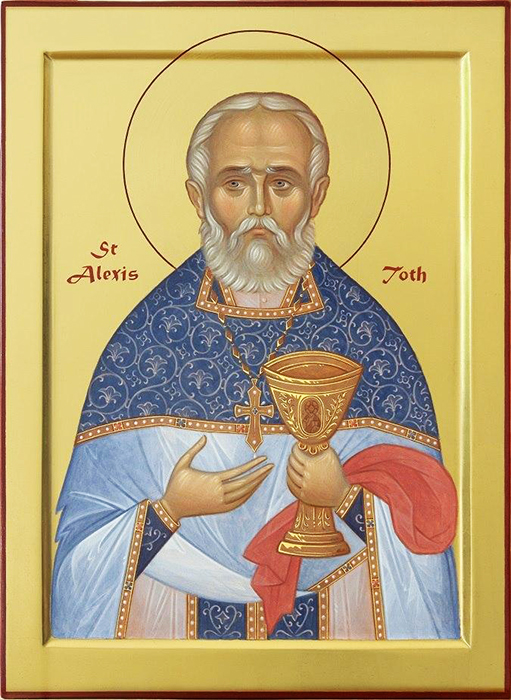
The painting of a new icon – be it a copy of a known sample or a new image – is akin to its birth into the world. The iconographic image elevates a person to the Primordial Image – to God or the original image of a saint; it opens for him a “window” into the spiritual world. Icon painters treat each image responsibly, with attention and awareness.
We painted icons of rare saints to order in our studio (to learn more click here), the most recent of which have been St. Nika of Corinth and St. Benedict of Nursia.


Compared to these images, the icons of the new martyrs look quite unfamiliar to us. For example, we have recently painted icons of the holy martyrs Yuri Novitsky and John Kovsharov to order.


One of our most recent orders was to paint an icon of the Holy Confessor Alexis Toth, who was canonized by the American Orthodox Church and glorified among the Saints of Galicia by the Ukrainian Orthodox Church. Thanks to his missionary activity within the emigrant Ruthenian community, hundreds of thousands of Uniates converted to Orthodoxy.
When you create an iconographic image, it is very important to collect as much information as possible so that you can prepare and learn more about the saint, get an insight of his life through his biography and recollections.

One way or another there emerges a connection between the icon painter and the saint whose image he paints: traditionally, the artist prays to the saint and reads a canon or prayers to him. At any rate, collecting information is always the first step.
The next step was the preparation of a sketch.

The client submitted several images to guide the icon painters. There are cases when the samples simply do not exist, and this is when the artist faces an interesting creative task – to create the non-existent iconography. For example, when you paint an icon of a locally revered or a newly glorified saint and there are only his photos or pictures. It is important to keep in mind the rank in which the saint is glorified: a holy hierarch, a monk, a new martyr, or a confessor. There is a special book on iconography and a collection of samples titled Podlinnik, which defines all the details of iconographic images. It is in that book that you can look up a canonical description of the image, i.e. how the saint is to be depicted.
Once the sketch was ready, it was sent to the client for approval. After the approval, the artist began to work.

Icon painters share that when they have to paint icons of new saints, those saints all become very close, just from the awareness that they were people who lived not long ago, who were almost our contemporaries or contemporaries of our parents. The people who knew those saints may still be alive. This very close relationship significantly helps the icon painter in his work, even if he doesn’t have enough detailed information about the saint. As a result, these saints become cherished and valuable acquaintances and companions in the everyday life of the icon painter.
You can order any icon in our studio, even if you do not have any finished samples or the iconography of the saint whose icon you would like to order has not been created yet. To learn more click here




If I may ask, does the St. Elisabeth Convent studio paint icons in languages not typical in Orthodoxy, such as German? I have been looking for iconographers who write in German but have not yet found any. Please let me know either way. Thank you.
Dear Joshua, we paint icons with inscriptions in any language, including German. You can contact us at st.elisabeth.shop@gmail.com and our sisters will provide you with all the necessary information.